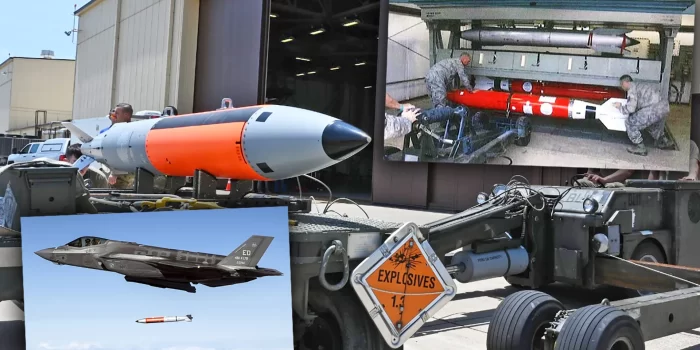On October 27, the U.S. Department of Defense announced its intention to create a new variant of the B61 nuclear gravity bomb, named the B61-13. This marks the 13th iteration of the B61 bomb design, continuing a tradition of updating and repurposing older nuclear warheads rather than constructing entirely new weapons. The B61-13 is designed as a gravity bomb for release from fighter or bomber aircraft, capable of causing thermonuclear blasts and dangerous fallout in the affected area, whether civilian or military.
The B61 variants have a long history dating back to the 1963 design of the first variant. Five of these variants remain in service today, with the B61-7 set to be replaced by the B61-13. While some B61 bombs can be carried by fighter jets like the F-15E and F-16, the B61-7 and its successor, the B61-13, are designed for nuclear-capable bombers, primarily the B-21 Raider stealth bomber and possibly the B-2 Spirit stealth bomber.
The B61-13 is intended to maintain the same yield as the B61-7 while incorporating modern safety, security, and accuracy features seen in the B61-12 line, such as the inertial guidance system.

Assistant Secretary of Defense for Space Policy John Plumb explained that the B61-13 is a response to the dynamic security environment, providing flexibility without increasing the overall number of nuclear weapons in the US stockpile.
Each B61 variant has different yield capabilities, which represent the explosive force of the bomb when detonated. The B61-13’s yield will range from 10 to 360 kilotons. Such yields translate to the potential destruction and harm that these weapons can inflict on cities and populations. For instance, a 50 kiloton warhead detonated in lower Manhattan could kill approximately 273,000 people, injure 471,000 more, and spread a radioactive plume towards Hartford, Connecticut.
While US cities are not expected to be targets of US nuclear bombs, understanding the potential effects of these weapons is vital for comprehending their design and purpose.

The B61-13 aims to enhance deterrence against adversaries and reassure allies and partners by providing the President with more options for specific military targets. Importantly, this development is a policy choice made by the Biden Administration, not a response to a specific threat.
In conclusion, the development of the B61-13 is part of the ongoing modernization of the US nuclear arsenal, ensuring its relevance and effectiveness in an evolving security landscape. The choices regarding the design and production of these weapons reflect the ever-present policy question of how to adapt the weapons of the past for an uncertain future, maintaining a delicate balance in a world where the use of nuclear weapons remains constrained by their devastating power.


